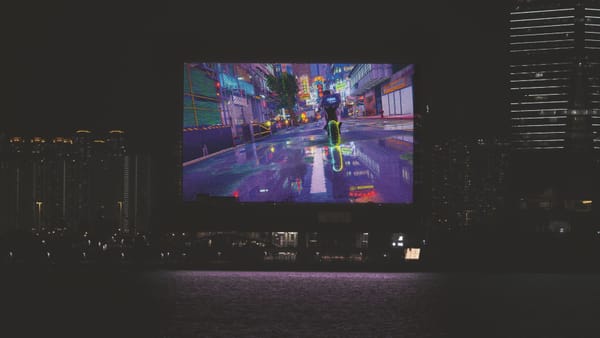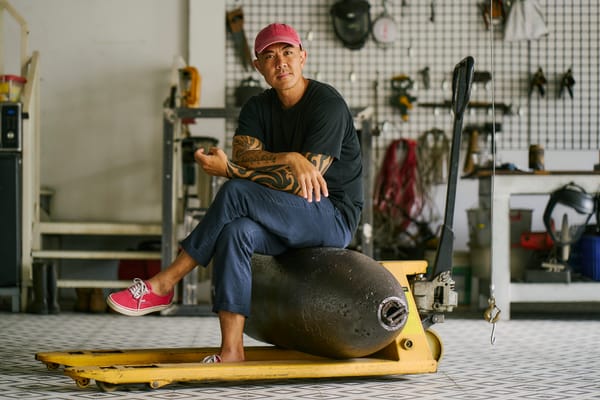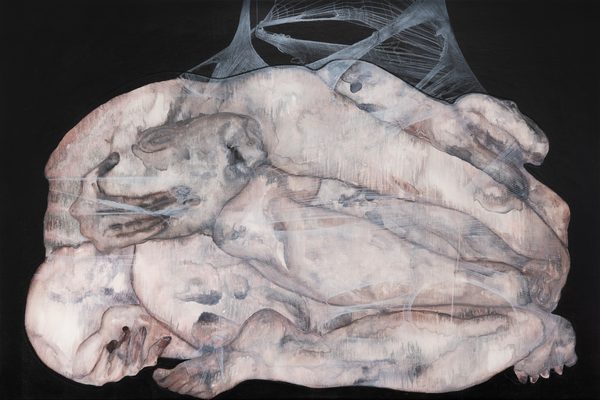People
Curator Conversations: Bill Nguyen
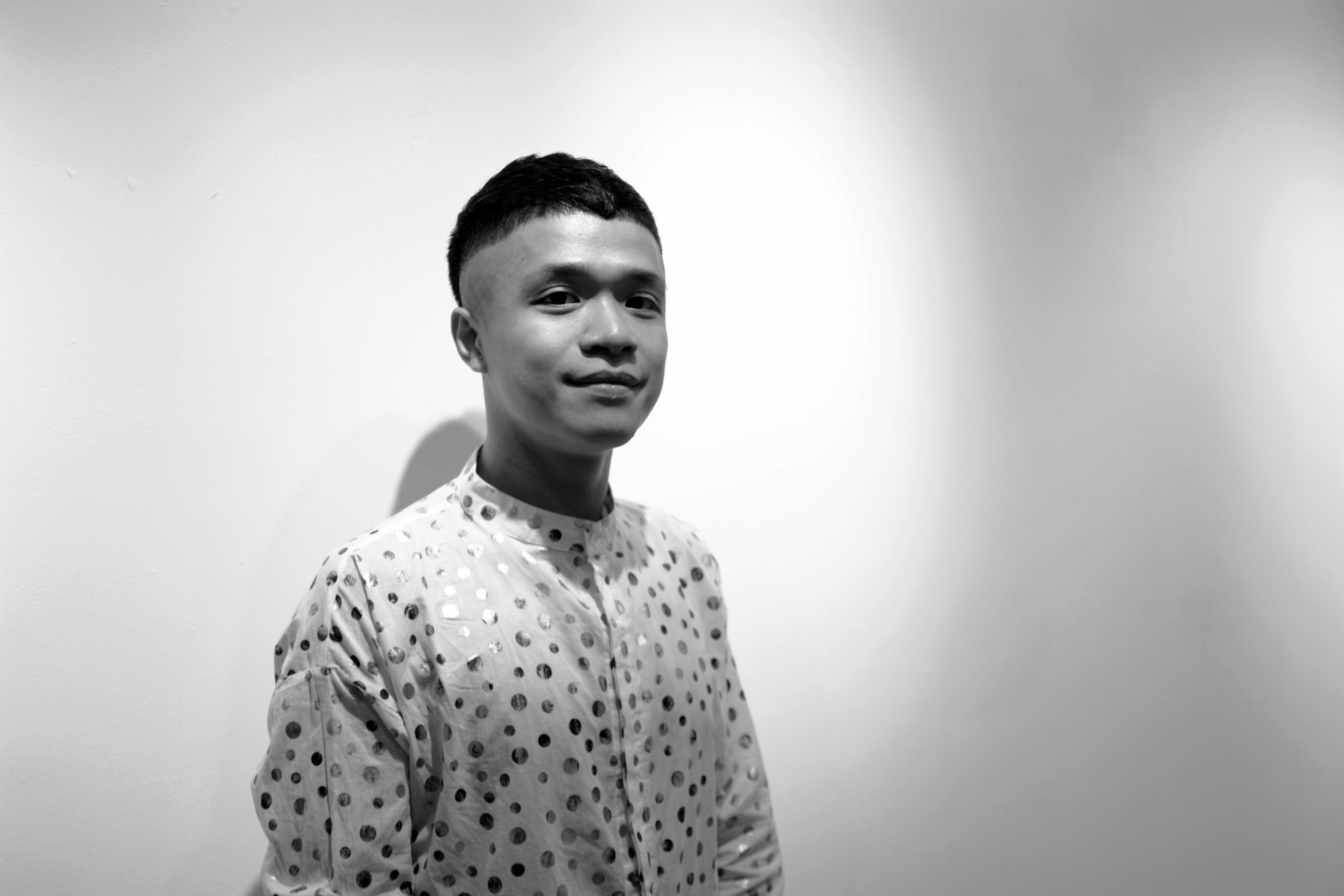

This conversation is part of a series between Caroline Ha Thuc and curators across Asia Pacific. Bill Nguyen is an artist, educator, and curator based in Vietnam. Nguyen co-led education programs at Hanoi Documentary Lab (DOCLAB) until 2013 and co-founded Manzi, a nonprofit gallery and café. He has been an assistant curator for The Factory of Contemporary Arts Centre in Ho Chi Minh City since 2017. In 2022, Nguyen was appointed as the director of the Nguyen Art Foundation.
You were trained as an artist. How did you become a curator?
I did not study curating but rather art making. Art has always been a great passion of mine, a life anchor. Thus, I have often tried to keep my relationship with art making as personal as possible. I left Vietnam when I was 15 to study in the UK because the local public school system, with its outdated curriculum and neglect of self-directed critical engagement, is rigid and indoctrinated. Although previously trained as a visual artist, I soon realized that I was more drawn to the universe surrounding art making. When I returned to Hanoi, I accidentally stumbled into organizing art events and started working with Nha San Studio as an assistant. At that time, the artist Nguyen Trinh Thi had just opened DOCLAB, an experimental space dedicated to documentary filmmaking and video art; she asked me to join the team as a teaching assistant. Being surrounded by artists and having them as my teachers—not only of the arts, but more importantly, of life, and this diverse, often fragmented, history that Vietnam has—allowed me to re-educate myself. My career path as a curator has thus been a personal journey of learning with artists.
In contrast, it seems that education has always been at the core of your practice.
During my time at DOCLAB, I realized that the people who enrolled in our education workshops, students or artists alike, did not have the “soft skills” that the art world requires today: how to present oneself as creative, write artist statements and CVs, how to engage in critical dialogue and offer feedback on the work of others, etcetera. Since these were skills I had learned while studying in the UK, I thought, “Why not share?” I began to host my workshops at DOCLAB, and this was how my love for education started. In turn, spending time with artists, trying to understand what they needed and were missing, also allowed me to learn more deeply about their practices and lives. I began to write short reflective texts and review exhibitions, trying my way to document the local art scene of that time.
In 2012, you cofounded an independent non-profit art space in Hanoi, Manzi. What drove you to do so?
Manzi was coestablished by Tram Vu, an art worker who is well known for putting the British Council onto the cultural map of Vietnam, and Giang Dang, a writer and activist whose practice focuses on trauma and healing, as well as myself. We wanted to create another space for art in Hanoi that would fill a gap in the local art scene. On the one hand, there was the Fine Arts Association, dedicated to official modes of art making (i.e., ideologically oriented, state-controlled), and on the other, there were experimental spaces like Nha San Studio, but there was nothing in between. Manzi serves different kinds of artists, not only on the opposing ends of traditional and experimental, but also those who found themselves not belonging to either camp.
.%20Exhibition%20installation%20shot.%20Photo%20courtesy%20of%20Manzi%20Art%20Space.jpeg)
Did you already consider yourself as a curator?
At Manzi, we had to do everything ourselves, but I never considered myself a curator. In a context where curating is not properly taught and people didn't have concrete knowledge or professional training, I adopted a do-it-yourself approach, where lessons were learned as I continued to make—and fail, too! I was not doing anything by the book; my approach was more intuitive. Only when I moved to Saigon in 2017, to work for the Factory Contemporary Arts Centre, did I gain more confidence. I even began entertaining the idea that, perhaps, curating was my path.
Today, how would you define your role as a curator?
As a curator, I am not interested in what or who to curate but in how. My mission as a curator takes on many roles: a study partner who shares knowledge and skills with artists, an interpreter who translates and connects them and the public, and a navigator who negotiates with the authorities and legal territories. Having been able to observe the local art scene, from both inside and outside its physical and cultural boundaries, I also like taking on the role of a “drifter,” trespassing in between different communities and generations of artists: the old and young, the established and up-coming, the northern and southern, the local and diasporic; studying while also attempting to make sense of gaps which have been disrupting them for years. In doing so, I hope to bring to light the often undocumented, and therefore lost history of Vietnam and its social life.
Since early 2022, you have been Director of the Nguyen Art Foundation. This implies, among other things, working with an existing collection. How did that change your curatorial work?
I enjoyed the freedom I had working with Manzi or The Factory because, although they were public-facing organizations, as curators we did not necessarily have to follow strict standards. Now that I have joined the Nguyen Art Foundation, I take more time to consider, be cautious, and reflect on how I curate and lead the institution. With a collection that is actively growing attached to the Foundation and attention to longterm education for the public, there is more at stake in finding appropriate ways to display artworks and conduct our programs in Vietnam’s current sociopolitical climate.
Ideally, it would be great to be able to balance both of these worlds, to stay truthful to curating, which, in my opinion, is about pushing for changes while remaining open-minded and, at the same time, understanding the needs of our various types of audiences, and to tailor the way I curate, so that an exhibition can be welcoming enough for everyone to engage.
I perceive curatorial work as something that takes place both horizontally and vertically. The horizontal involves equal care to artists, their artworks, the organizations or spaces you work with, the media, the authorities, and the public, all of whom I consider partakers of an art ecology, offering balanced care towards every single one. Meanwhile, the vertical dimension addresses the depths of different types of languages and communication styles to engage each particular group. As such, I often see myself as a service provider—a servant almost, because I work with and for all these groups. This could be exhausting, but in Vietnam, which is often defined by what it lacks, one has to wear several hats and proactively create new opportunities and ways of doing things. As a curator, one should be able to speak to the business sector to raise funds, tap into the intellectual world to seek collaborations, speak to institutions and persuade the authorities for permission, and then switch one’s brain once again, to communicate with the general public.
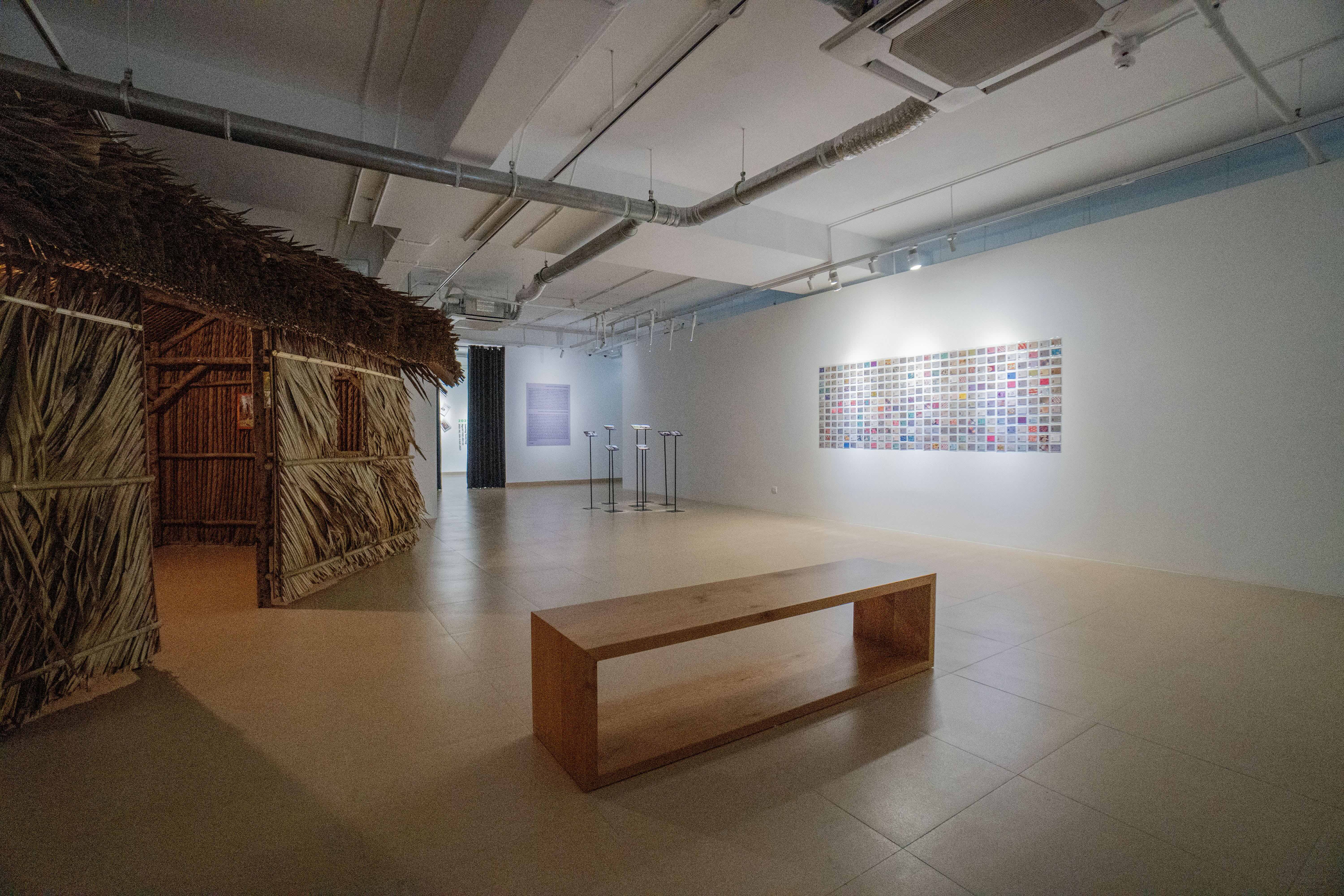.jpeg)
You have recently curated Nguyen Thi Thanh Mai’s “No More, Not Yet” (2023), an exhibition dealing with illegal migrant workers—displaced and marginalized populations that are too often neglected. How did you introduce such a sensitive topic?
This exhibition exemplified some of the challenges and obstacles that art workers and institutions might face when working in Vietnam, in a climate where discussing social issues is not favored by the authorities, especially when it is done publicly, or with public involvement. When I approached the founder of the Nguyen Art Foundation with the idea to host this exhibition, I was aware that it could attract the wrong kind of attention from the authorities. However, I thought it was more important that the Foundation hosts Thanh Mai’s exhibition and shows support towards artistic practices that are similarly people-oriented and community-conscious. I believe an institution such as the Nguyen Art Foundation ought to care not only about the arts community, but also about society at large.
On the opening night, a member of the cultural police department visited and asked us to close the show because we did not have the right license to host it. For our previous exhibitions, we did not apply for one either, since we were trying to push the possibilities of being free from this administrative procedure. Eventually, we managed to get a license for Thanh Mai’s exhibition, which indicates that the Foundation has some negotiating power to handle such situations. We were also allowed to continue with the exhibition's second part (located in a different gallery space), which deals with a marginalized community in Hue, Vietnam, without any licenses. This shows that there is room for change, regardless of whether that gap gets opened because of an external influence, or an internal wish for change among the authorities themselves.
Although this incident signifies some positivity regarding future exhibitions that we can host at the Foundation—even the future of our art scene in general, although it is too soon to make such a statement—curators working in Vietnam ought to understand that issues surrounding freedom of expression and censorship still have real consequences. It is thus important to ask ourselves: “Is this a battle worth fighting? Is it better to continue pushing or to retreat? Do I have the right resources to back me up? How will my actions and decisions affect others?’’
In the exhibition, one of the rooms called “Open Station” was dedicated to ongoing research and documentation. Which latitude do you have in terms of education?
With “Open Station,” I wanted to continue pushing to better understand what kind of materials would raise red flags and what curatorial strategies can be used to deal with issues of political sensitivity.
“Open Station” consisted of different kinds of visuals and texts, such as my curatorial essay, Thanh Mai’s notes and photographs (taken during her field trips), books, and research by other scholars addressing the turbulent relationship between Vietnam and Cambodia; or, more directly, the harsh reality of the undocumented, ethnic Vietnamese community living on Tonlé Sap lake, Cambodia. About 70 percent of this material is in English and remains untranslated to avoid issues for the writer or the Foundation. In many ways, that already limits the kind of audience it can reach. To counterbalance, articles taken from various Vietnamese newspapers and a TV screen with snippets of Cambodian news videos were also presented to show that multiple voices and perspectives on the same matter can coexist. Yet, you cannot have the complete picture if you do not speak all the languages.
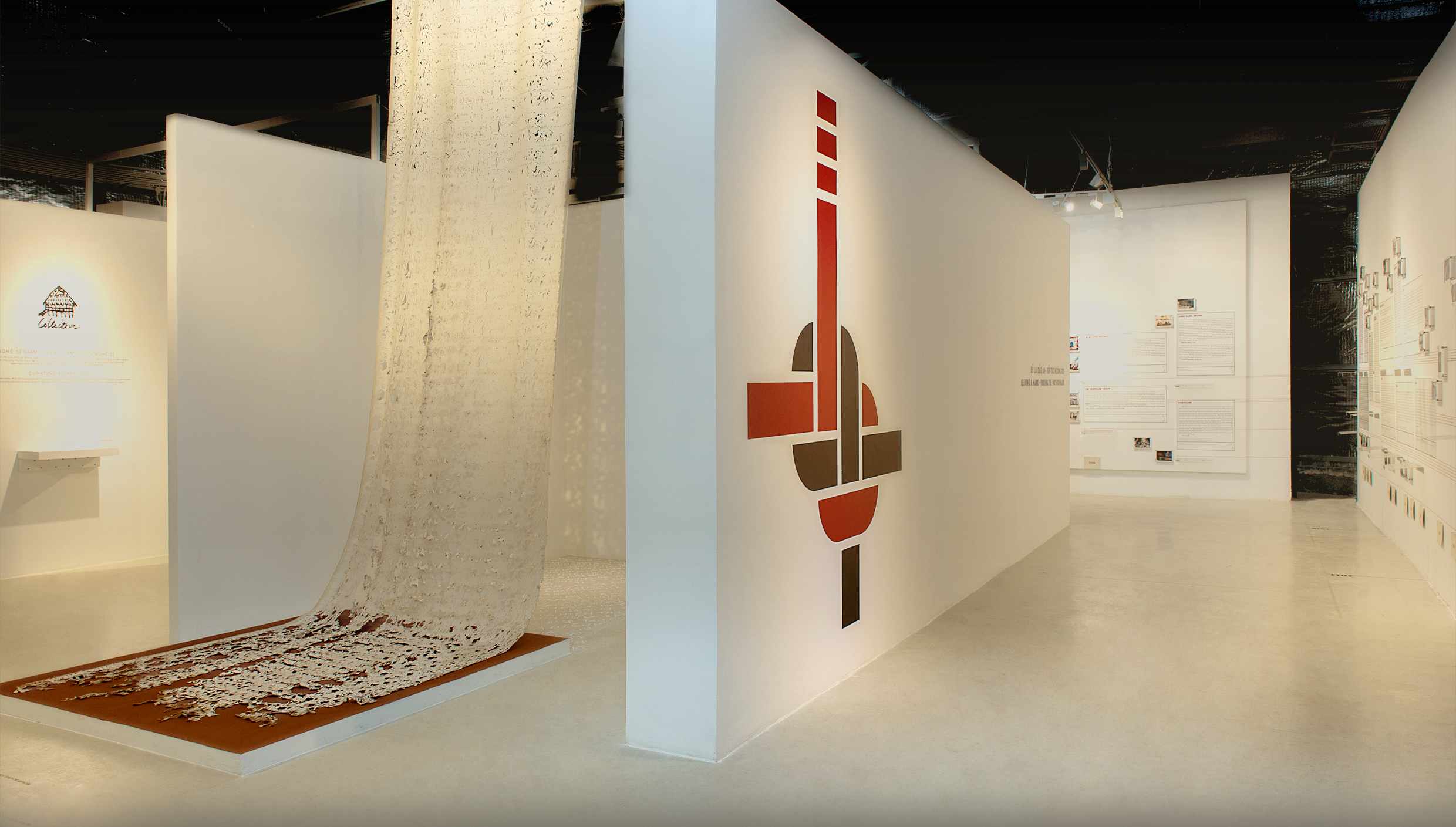
You also plan to revive the exhibition “Spirit of Friendship” (2017– ) that you co-curated with Zoe Butt and Le Thien Bao at The Factory. Do you still feel the urgency of documenting the Vietnamese contemporary art history?
One of the main reasons we started “Spirit of Friendship” was because of the historical weight of the project. As both witnesses and partakers of the Vietnamese art scene, we felt a tremendous responsibility to gather and share with our public as much material as possible, because this rich, overlooked history of Vietnamese contemporary and experimental art had not been officially recognized yet. Even though we were aware that the exhibition could be perceived as too dense and that not a lot of people would be able to read or watch everything during one visit, for me, “Spirit of Friendship” still works more like an archive and, as such, it needs to provide substantial information.
Today, the curatorial team (now with extended curatorial contributions from Le Thuan Uyen and Van Do) has been trying to find ways to bring new perspectives to the project. One idea is to invite young artist collectives to take over, commissioning them to recreate, in their own views, what this spirit of friendship could mean in contemporary times. Another idea is to completely open up the project by including other external curators to interpret and pursue the project in their own ways. On my side, I plan to bring the project to the Nguyen Art Foundation and have it reconstructed and displayed in a dedicated space, conceived as an education area and a research center. I feel it is crucial to give the project a tangible form and a permanent home.
Considering the lack of theoretical and historical frameworks, how do you gauge local practices, and what are the references that you can use?
The lack of theoretical and historical frameworks is sometimes a blessing in disguise, for it frees us from having to totally rely on or submit to widely accepted discourses that, for better or worse, are often Western-centric, and have the tendency to perpetuate themselves through repeated circulation. That is not to say that I disapprove of those discourses; rather, I respect them as one way of looking at art and the world in general. Oftentimes, when Vietnamese art is presented abroad, they get categorized under the themes of war and conflict, censorship and freedom of expression, oppression, and protest against ideological ideas, etc. This is understandable, for it is still through these particular lenses that the outside gaze penetrates us. But there is more to us than that because there also exists all the messy, not-so-straightforward maneuvering—the very stuff of life—an undeniable fact that I believe needs to be brought to the fore.
So, when discussing or writing about art practices or artworks, I often talk through the practices and the works themselves. In terms of form and visuals, what can I see on the outside? How does this process of seeing with the eyes inform the process of seeing with the mind? Within the layers of materials and techniques that the artwork embodies, what can I learn about the artist’s relationship to their medium and to the histories of their medium?
I am also inspired by the conversations I have with artists because most are also storytellers. Many have an amazing talent for educating through the sharing of their personal stories by talking about their work in a grounded, fuss-free way. I believe they do not need theories to back up what they say or to be understood.
.jpg)
Are you still working as an artist, and how does that impact your curatorial practice?
I continually try to practice as an artist. A lot of my work is text-based performance, so it shares certain similarities with the aspect of writing in my role as a curator.
One of my latest works, titled Sống – Lại (which means to be alive again, to resurrect, to restore to life) (2021– ), combines archiving and poetry writing, its outcome taking the form of a performative reading and a video circulated online. For this piece, I identified particular artworks throughout the last 20 years or so of Vietnamese contemporary art history that explore notions of attachment, home, and rootlessness; these speak of relationships and encounters, of love and desire, of being together and being apart. Kiss by Lai Dieu Ha, Father and Son reading the Tale of Kieu by Le Vu, The Wedding Dress (2001) by Truong Tan, 0395A.ĐC (2011– ) by Ly Hoang Ly are some of the works featured in the piece. They speak to me dearly and personally, and I thought they deserved a more attentive re-exploration and re-reading. Working this way as an artist, my investigation or re-visiting of particular art historical moments does not have to bear the weight of an academic or historical perspective. It offers a rather free way to write about art. Now and again, I try to incorporate this personal approach into my curating and curatorial writing. Perhaps it could be seen as an attempt to create something that is more accessible and humble for the audience.




